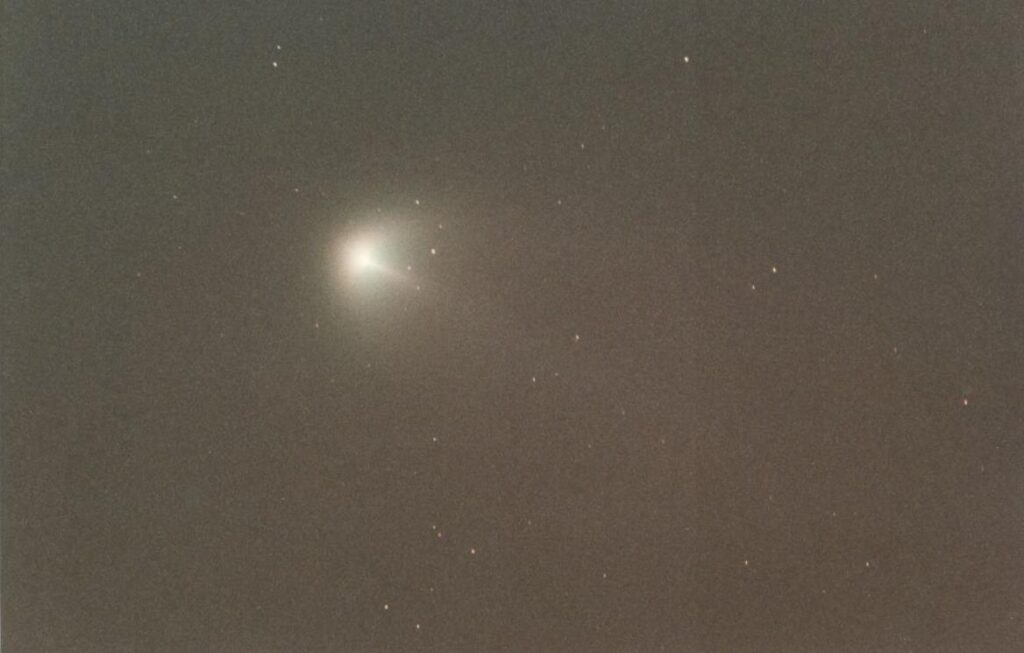NASA has suggested this multiple times – recently in an article in the Philadelphia Inquirer that spread via AP around the world. The statement either suggests that NASA logic is seriously flawed OR there is something much more profound going on in the solar system with respect to the spread of life.
Some NASA scientists have concluded that some bacteria would survive the uplift into space, even from the Earth, from the ejection of rock caused by a large impact. And some NASA scientists have concluded that some bacteria could survive a long duration flight between Earth and Mars via meteor (see Horneck, Melosh, et al., Natural Transfer of viable microbes in space 1: From Mars to Earth and from Earth to Mars, Icarus, 2000). The issue with respect to Mars Sample Return is simply that the transfer of some microbes, probably 3 billion years ago, does not guarantee that whatever microbes evolved in Mars worsening climate would still be benign on Earth today. So returning these Mars samples now, potentially containing completely unknown microbes, is simply too risky. (I.e., the risk of accidental release of either the NASA samples or the Chinese samples of microbes that might be pathogenic or invasive is too high given that we only have one Earth.)
But there is another, even deeper issue related to NASA’s claim. If the microbes spread thru space via meteor (which, according to NASA happens often) also reach a comet (which seems inevitable), conditions there (considering that comets contain water and amino acids) would sometimes favor replication and growth on or in the comet. And as the comet nears the sun and ejects water and dust, the hitchhiking bacteria would likely spread thru space and reach other comets. Comets are sometimes flung out of the solar system by interaction with Jupiter’s gravity, and would eventually reach other star systems, carrying frozen, dormant bacteria. Other scientists have shown frozen bacteria can revive after millions of years; the maximum length of time is not yet known.
So, does NASA really want to claim that Earth is safe because Mars meteors, potentially carrying bacteria, reach Earth “all the time”? The implication of such a claim implies the real possibility – even likelihood – of a galactic spread of life, similar biochemically to Earth life.
Interestingly, the 10-billion-dollar James Webb Space Telescope has already detected water vapor on an exoplanet (a planter orbiting another star), over a thousand light-years away, and will be searching for molecules to indicate the existence of microbial life on many exoplanets.
If this scenario (of galactic spread of microbial life) is true (as at least two Nobel prize recipients have postulated), then Mars certainly had microbial life when the climate there was warmer and wetter. And that Mars life may have evolved over billions of years as Mars climate worsened to something very dangerous to our biosphere. It’s a chance we cannot afford to take without knowing for sure if the samples being returned are sterile. If they might not be sterile, take them to a Space Station (ISS, future Lunar Gateway, Chinese Space Station) for initial analysis. Humanity will get one chance to do this safely.

Any study of living organisms from Mars brought to a space station, the Moon, and certainly, onto Earth cannot be considered safe for our biosphere. If they became contaminated, how, with any high degree of certainty, could that be detected? Even a few dormant extremophiles could “reawaken” once on Earth. Other unforeseen problems are enormous. For instance, what if researchers or their spacecraft became colonized and, therefore serve as possible vectors? Would Astronauts be willing to stay and die in their research station? Should/would the rest of humanity allow them to return to their home on earth?
Neither temporary quarantine nor isolation would be enough. It is known that organisms, especially virus, have been shown to survive for millennia in permafrost. At this time, the risks are too great to accept unless a 100% guarantee of detection/elimination of any organism on any device or in any human could be achieved. The intellectual and other possible benefits are not justified due to the risks to the life on our planet. NASA should not “bet the farm” with this quest. Life on Mars, if found, should be studied on Mars with robotics, and it should be left there.
Thank you for the comment, Dr. Agger. I hope you will submit a comment to the EPA when when NASA unveils its draft EPA document sometime this fall.